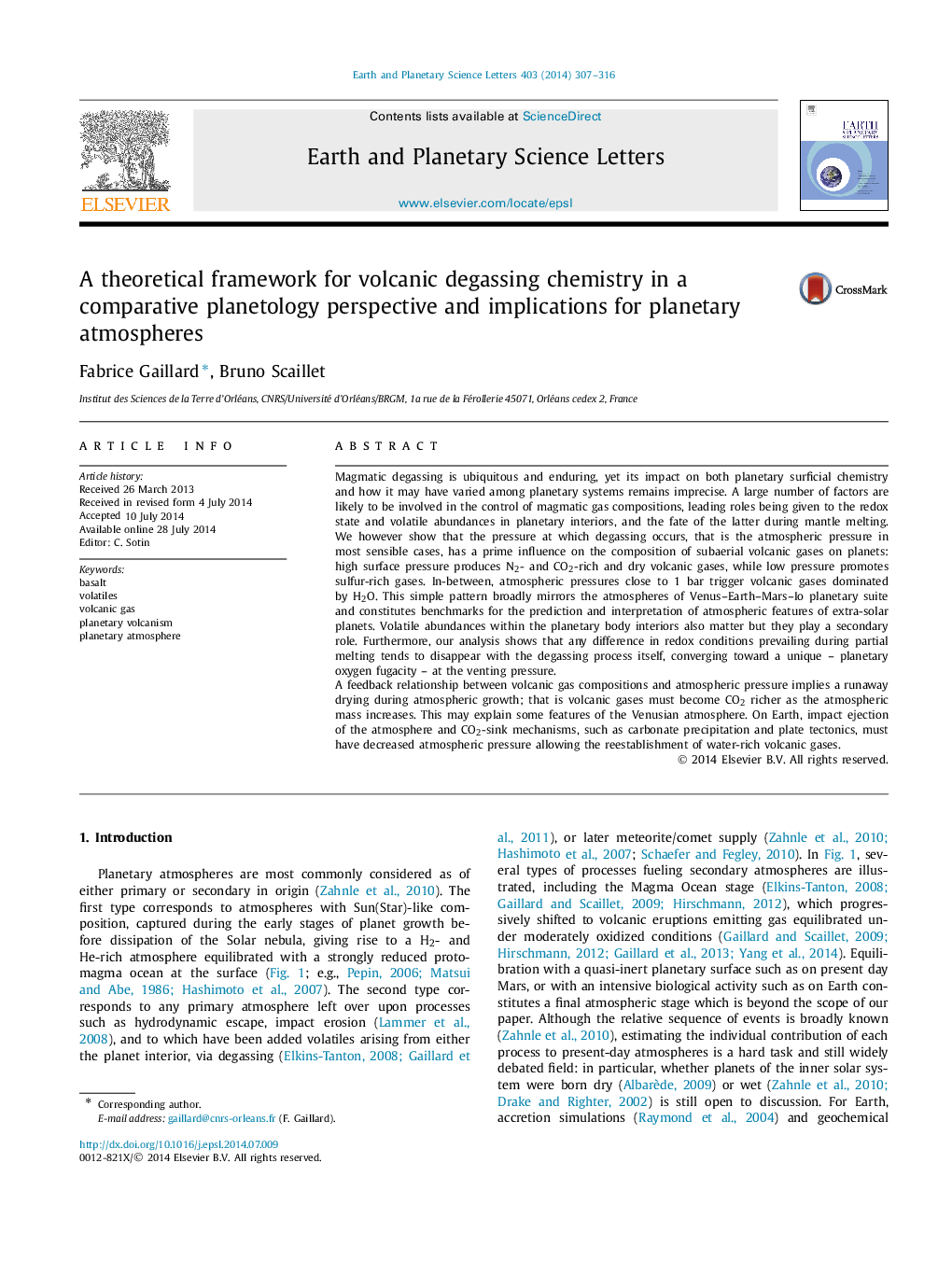| کد مقاله | کد نشریه | سال انتشار | مقاله انگلیسی | نسخه تمام متن |
|---|---|---|---|---|
| 6429137 | 1634753 | 2014 | 10 صفحه PDF | دانلود رایگان |
- Composition of volcanic gases is discussed at planetary scale.
- Volcanic gases are shown to be primarily controlled by atmospheric pressure.
- High ground pressure triggers dry gases.
- Low ground pressure triggers water-rich gases.
- Degassing in vacuum conditions promote SO2-rich gases.
Magmatic degassing is ubiquitous and enduring, yet its impact on both planetary surficial chemistry and how it may have varied among planetary systems remains imprecise. A large number of factors are likely to be involved in the control of magmatic gas compositions, leading roles being given to the redox state and volatile abundances in planetary interiors, and the fate of the latter during mantle melting. We however show that the pressure at which degassing occurs, that is the atmospheric pressure in most sensible cases, has a prime influence on the composition of subaerial volcanic gases on planets: high surface pressure produces N2- and CO2-rich and dry volcanic gases, while low pressure promotes sulfur-rich gases. In-between, atmospheric pressures close to 1 bar trigger volcanic gases dominated by H2O. This simple pattern broadly mirrors the atmospheres of Venus-Earth-Mars-Io planetary suite and constitutes benchmarks for the prediction and interpretation of atmospheric features of extra-solar planets. Volatile abundances within the planetary body interiors also matter but they play a secondary role. Furthermore, our analysis shows that any difference in redox conditions prevailing during partial melting tends to disappear with the degassing process itself, converging toward a unique - planetary oxygen fugacity - at the venting pressure.A feedback relationship between volcanic gas compositions and atmospheric pressure implies a runaway drying during atmospheric growth; that is volcanic gases must become CO2 richer as the atmospheric mass increases. This may explain some features of the Venusian atmosphere. On Earth, impact ejection of the atmosphere and CO2-sink mechanisms, such as carbonate precipitation and plate tectonics, must have decreased atmospheric pressure allowing the reestablishment of water-rich volcanic gases.
Journal: Earth and Planetary Science Letters - Volume 403, 1 October 2014, Pages 307-316
